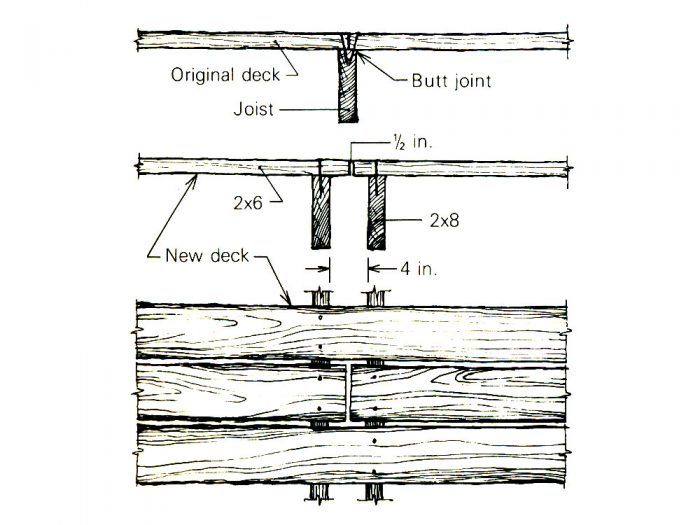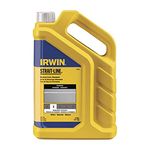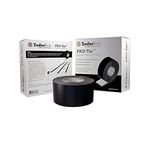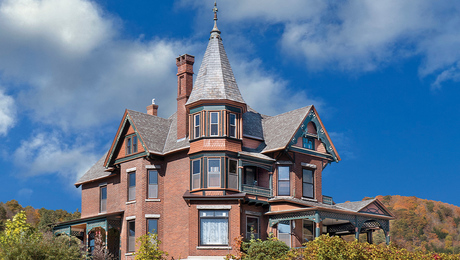
When our house was built in 1958, the plan included large decks on two sides. They were built conventionally: 2×8 joists set on 4-ft. centers covered with 2×6 planks set on 6-in. centers. By 1980 I had to replace the decking, primarily because of rot that started wherever two 2x6s butted each other over a joist.
My design involved doubling up the joists at each station, as shown in the drawing. This simple change accomplishes the following: no tight butts in planking, no butts over joists, no split 2x6s from nailing them at their ends, and the entire structure can now “breathe.”
The deck has a width of 15 2x6s. With careful layout using lengths up to 20 ft., I have no more than four joints at any station, minimizing waste. I used pressure-treated southern yellow pine. All the lumber cost about $1,000, and only $64 was added by doubling up on the 2x8s.
—James B. French, Portsmouth, RI
Edited and illustrated by Charles Miller
From Fine Homebuilding #5
Fine Homebuilding Recommended Products
Fine Homebuilding receives a commission for items purchased through links on this site, including Amazon Associates and other affiliate advertising programs.

MicroFoam Nitrile Coated Work Gloves

Standard Marking Chalk

Flashing and Joist Tape



























View Comments
2x8 joists on 4 ft centers? Why is Fine Homebuilding publishing a "fix" on a deck that doesn't even meet code to begin with?
This is "tip" is from issue 5. What was the code then? It appears that FHB recycles these without consideration to provide a "service."
I think you guys are missing the point ( Suburbanguy, Ladella). There is no reason this technique could not be used today. Just adjust the spacing and joist size to fit modern day code. Use the tip/ technique and move on.
Sorry m2akita. Fine Homebuilding should be about best practices, not about simple "fixes". Best practice, for example, involves covering the joists and beams with Grace Vycor or some similar material so that they shed water which delays or eliminates rot. (It's fairly easy to replace deck boards if the underlying structure is sound.) Best practice involves coating the ends of deck boards with wax to prevent them from splitting, rotting, etc. Best practice involves staining both sides of the deck boards before fastening them. Someone adhering to best practices wouldn't even use 2x's because the wood is so poor. 5/4 deck boards are generally far superior in quality. 5/4 deck boards don't twist and warp like 2x's. They have nice rounded edges which aids in stain adhesion. Best practices is not nailing or even screwing from above. This damages to the face of each deck board, leaving a dimple, where moisture accumulates leading to problems with stain adhesion, and then...rot. If the deck had been fastened from underneath, there would have been more than enough room on that 2x for the two deck boards and an air gap. Fastening from beneath also allows the homeowner to have the deck easily re-sanded with a plate sander to renew the deck.
There are too many "best practices" for me to go into here and it is my opinion the Fine Homebuilding should only be promoting the best techniques, not "fixes".
Dear James: That's an interesting approach. Here is another tip to avoid rotting decking: cover the tops of the joists with adhesive flashing. This eliminates the tendency for moisture to be accumulate between the joist and decking, which will rot both.